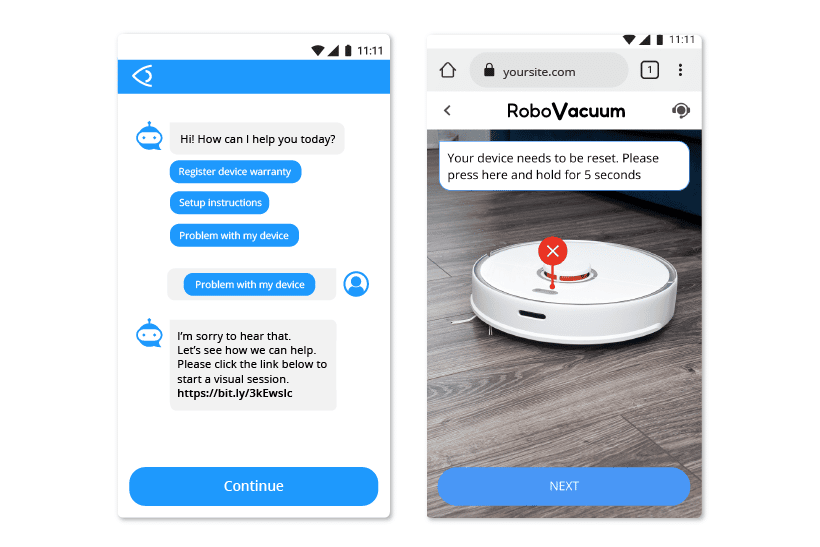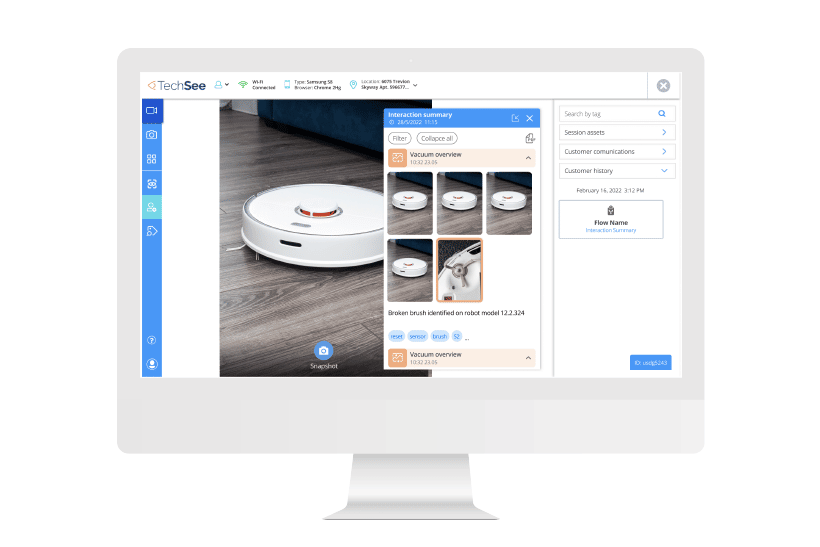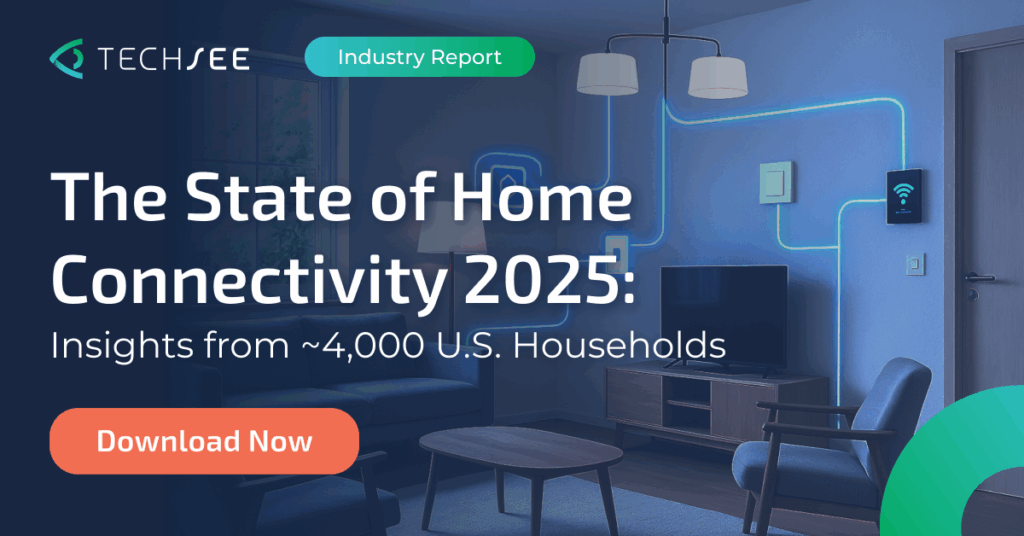Contents
Providing a digital, omnichannel customer experience is a clear imperative. Allowing customers the flexibility to digitally self-serve can dramatically increase customer satisfaction, and lower your operating costs. Gartner reports that self-service costs around $0.10 per contact compared to live channels which cost an average of $8.01 per contact. However, current technology solutions are not meeting demand. Research shows that 9 in 10 self-service sessions end without a successful resolution, and the flow from self-service to a phone call to the service team can be anything but convenient.
In the quest to create choices for customers, organizations have deployed technologies from chatbots, mobile apps and social media to IVR and ACD. However, offering the customer choices doesn’t always create a better customer experience. Connecting these channels to create continuity across the customer experience can be challenging. The following are 3 of the most common failure points faced by companies who have deployed a digital customer service strategy and how you can overcome them to get the most out of your tech stack.
3 Omnichannel Customer Experience Strategy Failures & Solutions
No Vision, No AI, No Service. No Visual Data
Use visual data to enhance self-service with context & customization.
One of the greatest challenges of providing digital service is the lack of personalization and contextualization. Sessions are impersonal, instructions and guidance provided are generic, and the visual data accumulated is not being used to its full potential. A majority (77%) of consumers are willing to provide more information if they will receive a more personalized, faster and value driven experience.
Organizations looking to take their digital service to the next level can supercharge self-service channels using the visual data they already gather to generate a personalized, continuous experience. Use visual data accumulated during the self-service session to create customized, context-enriched instructions to the customer’s exact device and environment. Visual data can also influence escalation next steps. Use this information to identify the customer needs, and route them to the correct channel.
For example, a customer’s smart vacuum won’t start, so they initiate a chatbot session on the manufacturer’s website. The chatbot automatically initiates a visual session, and using computer vision AI identifies the issue. AR annotations overlay instructions on how to reset the device. Using the visual data collected, the bot is able to immediately provide customized instructions on the customer’s very own images. If the customer fails to resolve the problem on their own, the bot can use this same visual data to identify next steps. For example, the visual data may indicate that the customer needs to order a new part, and will need to speak with a contact center agent from the vacuum’s hardware department, not say, the mobile app team. With these insights, the customer gets transferred correctly, the first time, and can continue their customer service engagement and find resolution on the first contact.

Who Changed the Channel? No API & Integrations
Create seamless integrations across channels for higher FCR.
With endless digital service channels at your customers’ fingertips, it can be a challenge to integrate all entry points into a consistent service flow for your customers. No one wants a disjointed experience, or channels that don’t even communicate with each other. Nine out of 10 consumers report wanting an omnichannel experience with seamless service between communication channels.
Create an end-to-end seamless customer experience using integrations and open API platforms like TechSee Visual Journeys.
Download this brochure to learn more about TechSee Visual Journeys
No matter the first point of contact, ensure your customers experience a seamless and sensible flow across channels. APIs and integrations allow you to provide consistent visual guidance across every channel, maintain your branding and use the visual data to improve the next stage of the customer’s interaction. By visually identifying the customer’s device and accumulating service contract information in self-service, the customer can be automatically transferred to the correct department when escalation is required. This added context, gathered from the very first interaction no matter where your customer begins their journey, means that each new interaction begins exactly where the customer last left off.

For example: A customer calls their smart vacuum provider’s customer service helpline. The IVR asks if they need help with billing, sales, or technical support and the customer selects technical support. The IVR explains that a link will be sent to the customer to visually identify the problem. The customer is instructed to take photos of the device and the AI determines the specific model, and an issue with the device’s brushes. After guiding the customer through troubleshooting instructions, the error persists, and the AI determines that the brushes need replacing, and the customer is routed to the sales department. Automated routing from self-service to a live agent reduces customer frustration and improves chances of resolution on the first contact. Once the customer has been routed to the next channel, all their visual data is transferred with them. This allows a continuation of service from one channel to the next with continuous transition within the first contact and continuity of data.
If I’ve Said it Once, I’ve Said It 1,000 Times. No Warm Transfer Across Channels
Connect contact points for a continuous customer experience to reduce CES.
We all know the feeling of having to repeatedly explain an issue or re-enter information throughout a fragmented string of service interactions. Nothing is as frustrating as having to repeat yourself and feeling like every step has been a waste of time. Unfortunately, when organizations have invested in self-service they often miss the mark when it comes to creating a smooth transition between digital and live assisted service. Gartner reports that 96% of customers who experienced high-effort service that required them to repeat information reported being disloyal to the brand following the experience.
Steps that were taken in self-service disappear into thin air, and customers have to start from the beginning once they finally reach a live person. In addition, contact center agents waste time asking questions that have already been answered, and asking customers to repeat steps that were already tested.
Creating a link between self-serve and assisted service interactions is critical for customer satisfaction and contact center performance. Service continuity means taking into account the full omnichannel journey, and delivering a continuous, seamless customer experience from beginning to end. All data and visual information accumulated during each stage should be transferred with the customer so that all actions taken and the latest diagnoses are passed on.

For example: The customer from the previous example has been transferred to the sales team to purchase new brushes for their vacuum. The live agent connects to the session with the customer and immediately sees the interaction summary that occurred during the self-service session. The agent can see the device model, customer warranty information, that the device was restarted and the issue was discovered to be a broken brush. From there the agent can begin an order form, discuss with the customer what brush package they’d like to buy and complete the order. By not having to repeat steps or ask for customer information that was already inputted, the agent saves valuable time and effort. The customer has experienced a seamless end-to-end experience and is happy.
Conclusion
Delivering a continuous and seamless omni-channel customer experience is key to realizing the tremendous ROI benefits of digital customer service. In order to not fall into the common pitfalls when providing a plethora of digital service channels organizations should implement service continuity in 3 ways: first, supercharge digital channels with computer vision AI for enriched customer data, higher self-service success and containment rates. Second, connect digital service entry points with visual context and automation for better routing across service channels. Third, enrich service transfer from self-service to assisted service by ensuring a continuous flow of contextualized data.
To learn more about how leading enterprises are embracing service continuity with TechSee, schedule your complimentary consultation today.







